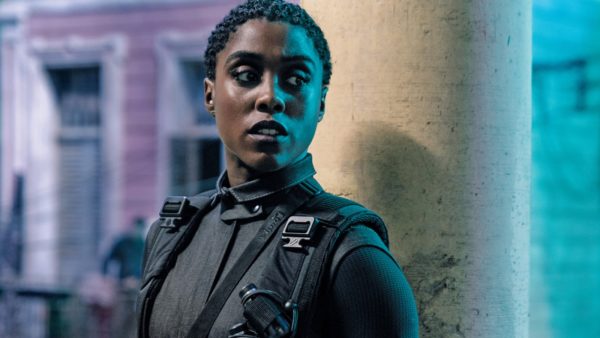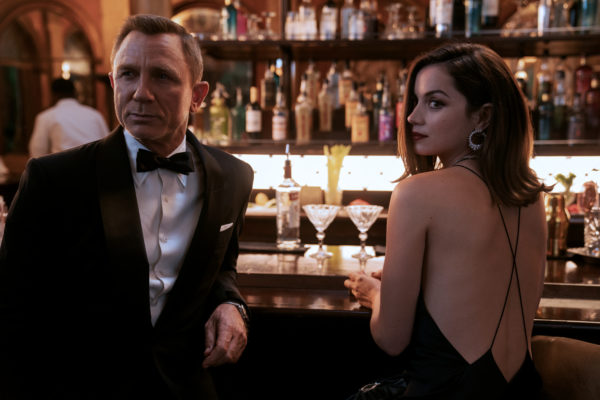
After more than a year of COVID delays, Daniel Craig’s final foray as James Bond arrives in theatres. But is No Time To Die worth the wait?
Sadly, the answer is mostly no. Craig’s fifth and final performance as the English spy is a bloated mess with one of the worst Bond villains in decades. Add in surprisingly underwhelming action scenes and a misplaced focus on Bond’s relationship with Dr Madeleine Swann (Léa Seydoux, still an uncomfortable fit for the franchise) and No Time To Die is a major disappointment.
The Cary Joji Fukunaga-directed film begins in an unconventional way: the pre-credits sequence feature a flashback that reveals Madeleine’s childhood trauma before cutting to the present. She and James arrive in a small Italian town for an intimate stop-over because Madeleine wants James to make peace with the ghost of Vesper (Eva Green, whose character died in Casino Royale, but is so memorable that the character is still a plot point and four films later).
James visits the Lynd crypt, but he’s attacked by Blofeld (Christoph Waltz)’s men, leading him to believe that Madeleine was playing him. The pair go their separate ways before the action picks up five years later. Bond, now retired and living in the Caribbean, is recruited by the CIA in the form of Felix Lighter (Jeffrey Wright) and Logan Ash (Billy Magnussen) to recover a kidnapped scientist in possession of a deadly virus. Despite being warned off the case by M (Ralph Fiennes), who knows more than he says, as well as defensive new 007 agent Nomi (Lashana Lynch, wasted), Bond learns that the Cuban case has ties to Blofeld. So off he goes.

Like every Bond film, there are new locations, action, and gadgets, but all of the franchise’s core components feel like Fukunaga and co-writers Neal Purvis, Robert Wade, and Phoebe Waller-Bridge are merely checking off boxes. There’s a curious lack of excitement or energy to the proceedings, principally because James is contemplative about the life he doesn’t have with Madeleine, which feeds into an overall narrative obsessed with heritage and literal blood ties. To suggest that No Time To Die has major parental issues on its mind would be a massive understatement.
The biggest problem is that No Time To Die is fundamentally built around Bond’s relationship with Madeleine, to the point of suggesting it is the single greatest love of his life after Vesper. This shouldn’t be an issue…except that Craig and Seydoux have absolutely no chemistry together. It’s not a simple lack of sparks; it is that the narrative presumes theirs is an epic love affair. One worth making sweeping sacrifices for, up to and including the end of the world. Unfortunately none of that actually comes across in the finished film.
Not helping matters is the fact that Swann is an absolute bore of a character, even more here than she was in Spectre. Madeleine is the film’s lynchpin: the entire narrative pivots around her, but the character amounts to little more than James’ love interest (at best) or as a living plot point who is there to be abducted and used for leverage against James (at worst). Seydoux seemingly also only has two facial expressions: sleepy or sad. All of this alone makes her a bad fit for a recurring player in the franchise, and this is before she becomes tied up in one of the most ill-conceived developments in the franchise’s 25 film history. It’s so, so astoundingly bad.

It’s clear that Fukunaga, Purvis, Wade, and Waller-Bridge believe that the heavy emphasis on looking back is the key to Bond – and by extension the 007 franchise – moving forward. This makes sense considering it is Craig’s swan song; No Time certainly has an air of closure to it.
Sadly these creative decisions don’t make for the most exciting, compelling or even interesting Bond film. It’s not that the character can’t have emotions or be romantic, but there’s too much of it, without laying the groundwork or helping audiences understand why Swann is worth all of the fuss.
If Swann is a frustrating character, she’s in good company with Rami Malek’s villainous Lyutsifer Safin. Not only is the character barely present in the film, but he lacks motivation or intrigue. The entire last act takes place on his island stronghold – a disputed territory between Japan and Russia – where Safin’s family raised him in a poison flower garden. It sounds like a fascinating set up, but aside from references to Bond’s first adventure in Dr. No such as Safin’s Japanese-inspired costuming, the end of the film is little more than one visually bland shoot-out after another. Aside from a *fine* long take action scene in a cramped stairwell – a pale retread of Fukunaga’s True Detective – the film limps to a rather bland and obvious finish. It’s clearly meant to be emotionally wrought and impactful, but neither term truly applies.
The single best aspect of the film are the Cuba-set scenes, where action and character coalesce perfectly in the form of Ana de Armas’ Paloma. Craig’s Knives Out co-star injects much needed energy and comedy into the proceedings as a plucky CIA agent with only three weeks of training under her belt. It’s an absolutely killer performance that is so captivating it leaves a void long after her scenes are over. Clearly what No Time To Die needed to do was leave the woh-woh Madeleine relationship in the past and let de Armas play lead Bond girl.
Which brings it back to Craig, whose last two outings as the debonair spy wound up being the biggest disappointments of his run. Sadly No Time To Die is a misguided, meandering slog. The actor deserved a far better franchise send-off than this. 2.5/5
No Time To Die arrives in theatres Friday, Oct 8
Thanks for the review, Joe. Always glad to hear your opinion.
And hells bells, other people leaving comments, just because he didn’t like it doesn’t mean you won’t. Judge for yourself.